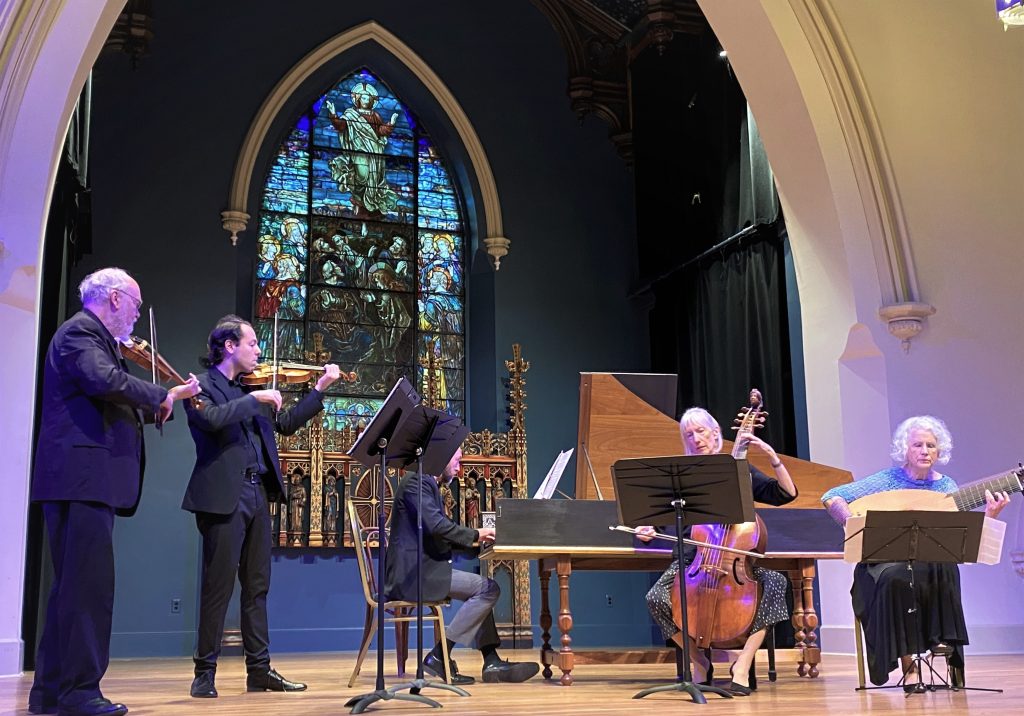
by Kevin T McEneaney
Aston Magna opened with J.S. Bach at Saint James Place in Great Barrington Sunday afternoon and closed with J.S. Bach. Someone once said to me: “The problem with you Presbyterians is that all you want to hear on Sunday is Bach.” I replied: “That’s because we can’t hear Bach every day. Besides, we do like to hear Mendelssohn, Saint-Saëns, and maybe even a little Telemann, but you know: Bach is Bach, and when he is well-played, it is very difficult to find anything better on a Sunday.”
Violinist Daniel Stepner, accompanied by Laura Jeppesen on viola da gamba and Catherine Liddell on theorbo, opened with Sonata in E minor, BWV 1023 (c. 1725) by J.S. Bach. This is the only accompanied violin sonata in Bach’s work that employs secular, dance motifs. A work in three movements, it employs a fast-paced Toccata that Stepner exuberantly nailed before gilding into a more sober and somber, yet quite ornate, Adagio. The following Allemande conjured tasteful social dancing at court, yet the frenetic concluding Gigue painted the exuberance of country folk dancing in a Bruegel painting.
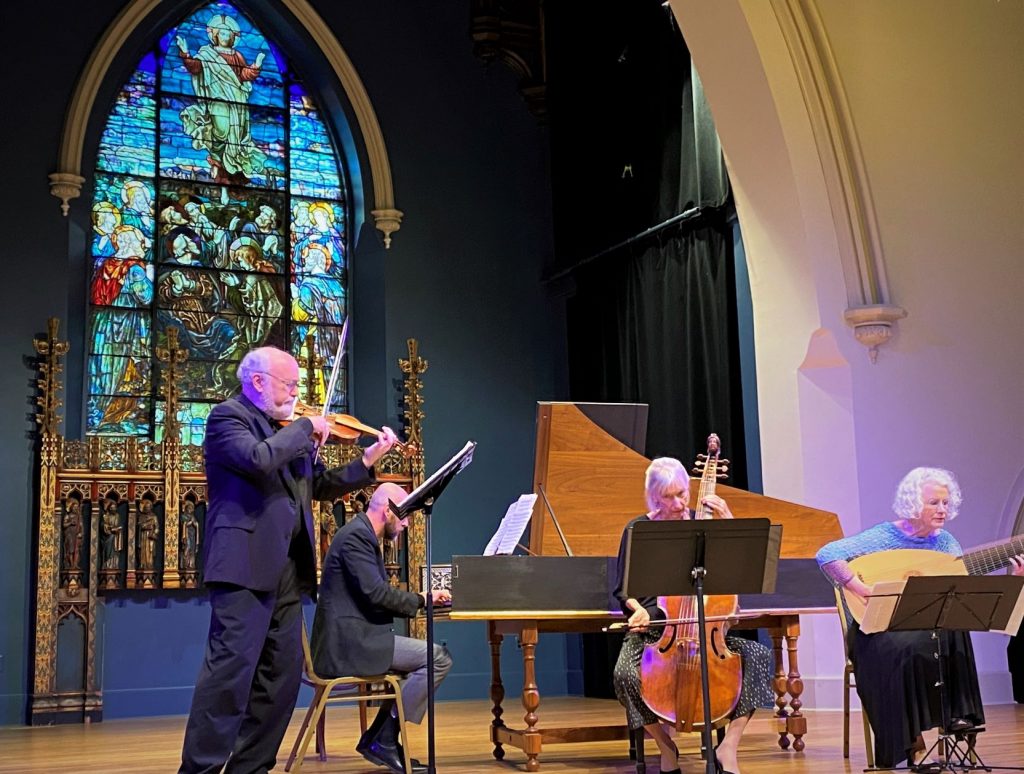
This fast-slow-slow-fast pattern is different from Bach’s religious sonatas written for churches with slow-fast-slow-fast sonata format. The accompanists were effectively just mood lighting to foreground the varied incarnations and styles of dance and the mentality of those who dance in various styles. The joyous dance of the peasants in the concluding Gigue appears to valorize spontaneity in dance and that was liberating in a musical ecstasy.
After being cast somewhat in the shadows, the accompanists were granted full stage. They played four pieces of court music, three by Marin Marais, plus an Allemande by Robert de Visée. Les voix humaines (The voices of humanity) by Marais, the favorite of Louis XIV; it sounded as if the music invoked an allegory about the vanity and folly of all humanity, a secular warning and historical lament, a work layered with deep emotion. Aston Magna has just released a new CD, Marais at Midnight, with Laura Jeppesen (married to Daniel Stepner), viola da gamba, and Catherine Liddell, theorbo. This cd just received a rave review at Fanfare magazine.
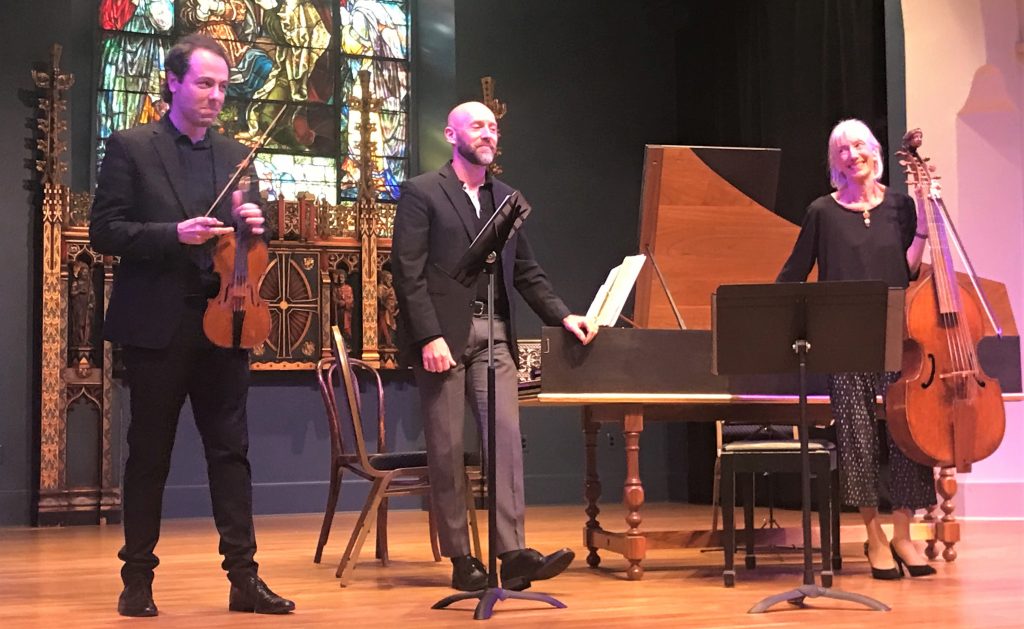
Edson Schied, accompanied by Sponseller on harpsichord and Jeppesen on viola da gamba, appeared for a performance of Jean-Marie Leclair’s (1697-1764) Sonata in A major, Op. 9, no 4. The prolific Leclair enhanced the violin’s expressive range and demanded greater physical difficulties for performers. The opening movement was a moving plea for spiritual sensitivity to which I was greatly attracted. The following Allegro appeared to invite that spirituality into daily life. The slow Sarabande, a Spanish dance with Arab roots, seemed to make a plea for social tolerance, while the concluding Allegro might have made the pitch that we (humanity) are all one. A short intermission followed those plangent considerations.
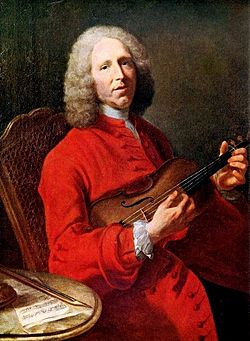
Michael Sponseller took stage on solo harpsichord, playing Les Triolets (1728) by Jean-Philippe Rameau, a master of the 18th-century French school of harpsichord music who wrote the definitive manual on playing harpsichord, born two years before Johann Sebastian Bach, became a seminal figure in French music. This piece, just under five minutes long, displays elevated beauty, wearing an aesthetic of keyboard triplets.
Sponseller performed the Rameau’s first little concert, Concert en Trio No 1 in C minor accompanied by viola da gamba and theorbo. Rameau was fond of enigmatic jokes; what the first movement, “La Coulicam,” signifies, no one seems to know, yet I speculate that it has something to do with memories of early childhood. The second movement “La Livri” alludes to recollections of children’s stories (my speculation), or as some musicologists say—without any rational proof—to be in the service of the Conte de Livri (which is an Italian title). The last movement “Le Vézinet” is commonly thought as an allusion to a wooded playground in the city of Paris where the music emulates the joyful sound of children playing and romping.
This composition featured the viola da gamba as lead instrument through all three movements, providing a showcase for Laura Jeppesen on period instrument, balanced between her knees (the foot for this cello prototype had not yet been developed), while Sponseller and Liddell played background support, although the last movement was really a lively duet between harpsichord and viola da gamba.
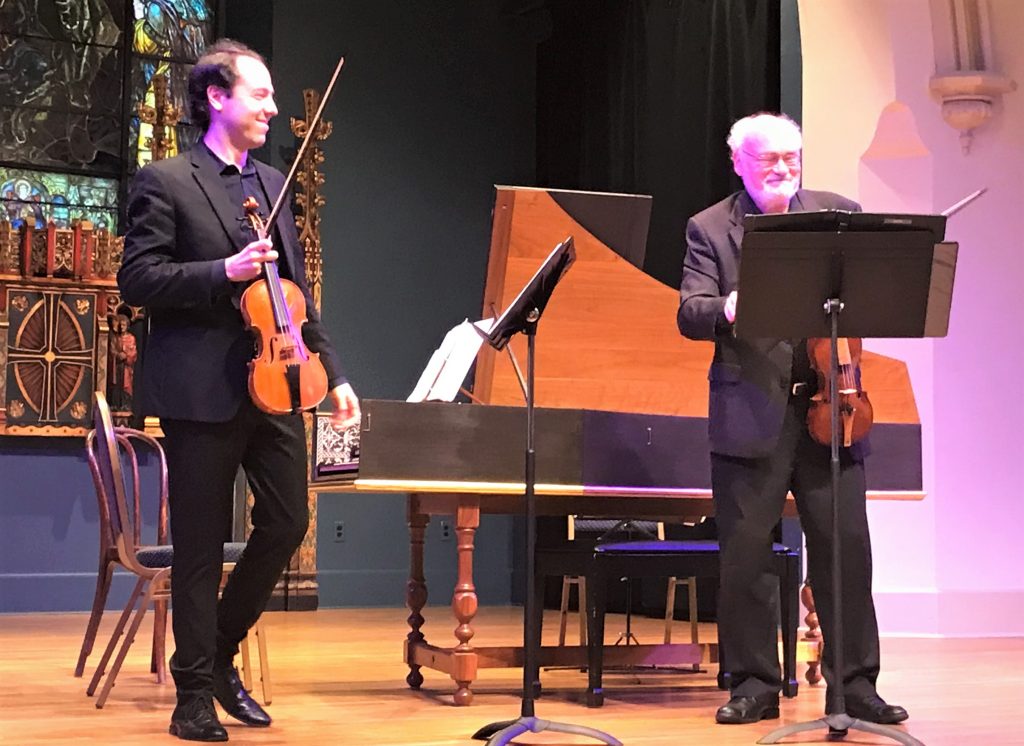
If you may entertain the notion that only contemporary violin pieces may be deucedly difficult to play, you are wrong: Op. 12 No. 2, Sonata for 2 violins in E major by Leclair will set you straight. Both Daniel Stepner, who is one of the most accomplished baroque violinists in this country, and his excellent protégé Edson Scheid were put to a test of maximum difficulty on their baroque violins, managing to squeak through with only one squeak (early on) by Scheid. The exceptionally rapid pace was breathtaking: to be in unity with 1/6 and 1/32 notes flying by in express mode delivered astonishment. What this work meant was beyond me, but it was a musical heaven. Leclair himself came to a swift and untimely end by being savagely murdered by slashing knife near his home in Paris, an unsolved murder, commonly thought to have been commissioned.
Glancing back to where this essay began and the concert itself, we returned to the music of J.S. Bach in Trio Sonata in C major. But did we? This work has no BWV number, and it may have been composed by Jonathan Gottlieb Goldberg.
While this concert opened with certainty, one might have noticed that it gradually plunged into enigmatic ambiguity as a leitmotif. These four movements of this sonata by the complete cast of performers were a piquant delight, ending with a Gigue, just as the first performed piece did.
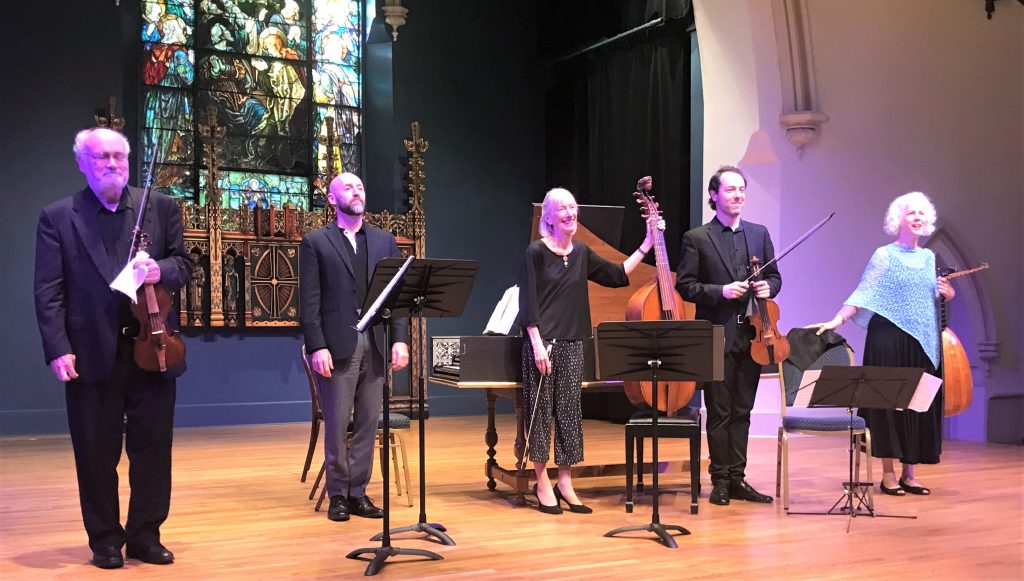
This was the first public performance of Aston Magna since the pandemic. For a brief interview with Daniel Stepner visit our Features section.